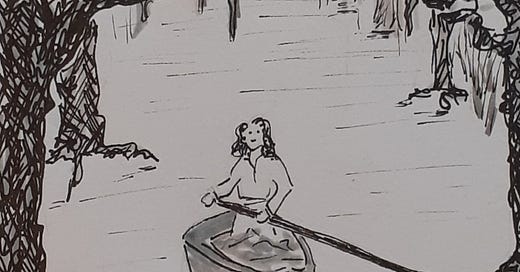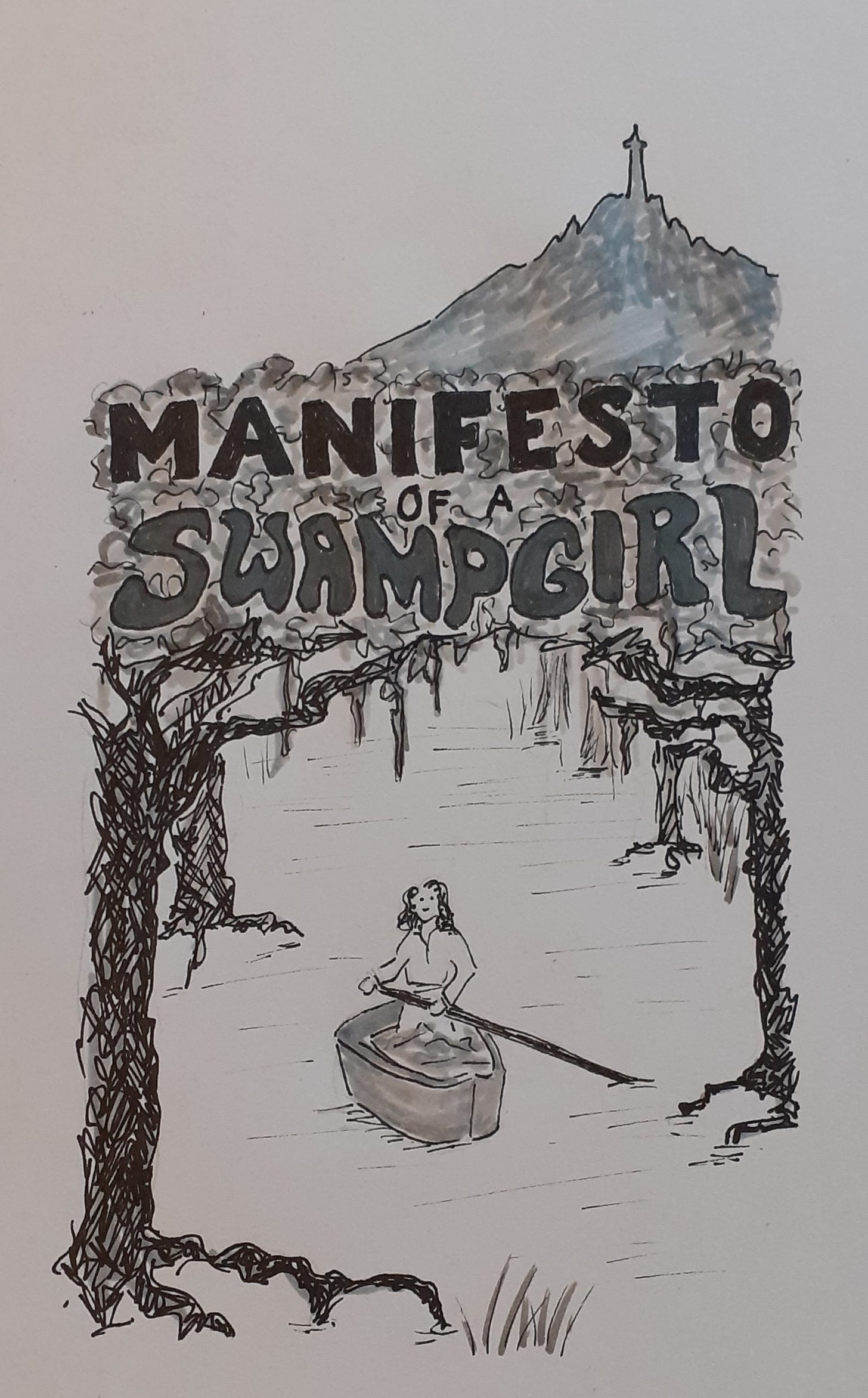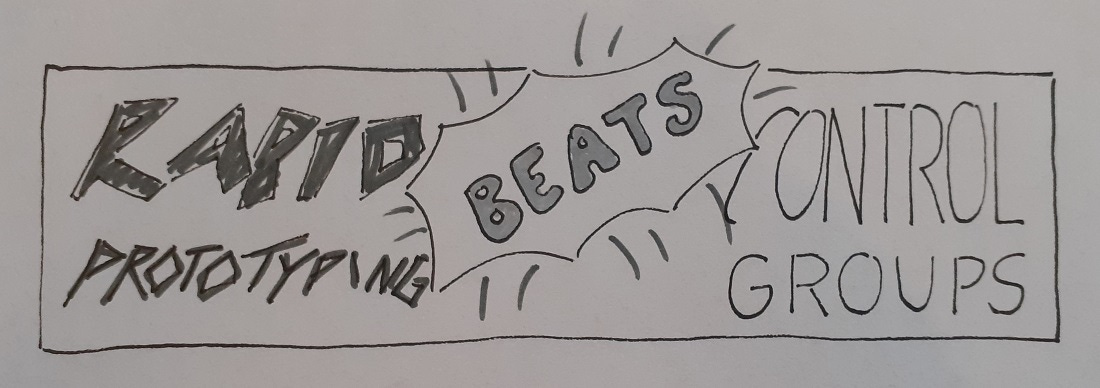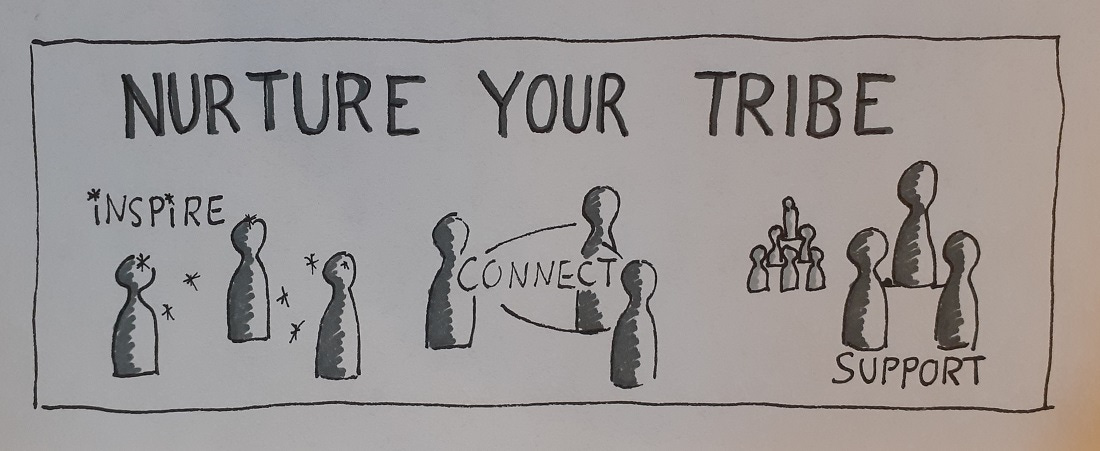Welcome to this first post of the Tactile Academia and Beyond substack. Here you will find out about the ethos, about me, the writer, and about how I think this is going to work. I hope that you will subscribe and go on this journey with me!
Let’s start with the basics…
What’s ‘Tactile Academia’?
‘Tactile Academia’ started as a project when I was working at a university and found myself teaching art and design students how to research and write academic essays. A lot of the students found this to be a different approach to knowledge than they were used to - or interested in. They were based in studios or workshops and preferred to do, experiment and make, rather than to have to read and write.
I had studied theatre design and was really into print-making and constructing artists books, so as a creative practitioner myself, I knew that the reading and writing not only helped me to communicate about my work with non-artists more effectively, it also helped me to develop my work further. It wasn’t just an ‘academic hoop’ the students were made to jump through in order to get through their university degree. As I wanted to connect with the students better (and - I admit it - to make it a bit more fun for me) I started using methods from creative practice to teach academic principles - coming up with visual analogies, objects and activities that were inspired by activities students were familiar with in the studio, like design tasks or simply sketching something.
The outcome of this were a series of activities I used regularly with my students (with great success - they became more engaged with their academic research, used better sources and produced overall better work), as well as some stand-alone workshops that I also took outside of the realms of art and design (think accounting, education, health, sociology, etc.). I called it ‘Tactile Academia’ because I wanted a name that suggested a practical and creative approach to academic work - the linking of creative with academic practice. In 2015 I was awarded a National Teaching Fellowship for this work (think UK Oscars for Higher Education professionals - this was a great honour!). I kept track of my thinking and ideas on a blog (www.tactileacademia.com) and collected the core study skills activities into a workbook for students (Writing Essays by Pictures).
Why ‘and Beyond’?
Currently I am not teaching at a university anymore. And while I still really like the ‘Tactile Academia’ name, quite a lot of the principles I use are not just applicable in an academic context. My work is about breaking down complex issues to make them easier to understand, to use storytelling to help people relate with subjects, and to utilise experiential design techniques to help people engage their audience in a maybe tactile, but most importantly meaningful way. I added the ‘and beyond’ to show that. Don’t get me wrong, I think most of the posts on this substack will relate to learning and teaching, but they might not ONLY be applicable within academia.
After publishing Writing Essays by Pictures, which is a workbook for students, I was often asked to write a book for staff on my approach to teaching. But I didn’t feel that the genre of a book was right for that - plus academic publishing is rigged in favour of the publishing houses (seriously, it is ridiculous how little money the person who researched, wrote, proof-read, etc. gets these days). Instead I preferred to share my thoughts on the blog, which is free (and will remain so). I didn’t really want to simply repeat work I had already done and that was out there, however, one of the ideas that I had for a long time was to look at my work again, employing a lens of experience design (which is one of my research interests) - to see whether there are as many overlaps as I think there are. So that is one of the things I will try to do with these substack posts.
The Manifesto of a Swamp Girl
In the varied topography of professional practice, there is a high, hard ground overlooking a swamp. On the high ground, manageable problems lend themselves to solution through the use of research-based theory and technique. In the swampy lowlands, problems are messy and confusing and incapable of technical solution.
(Schön, 1995: 28)
My name is Alke Gröppel-Wegener, and I am a Swamp Girl. Even though after my studies in theatre design I did a Masters and then a PhD, I was never that interested in the academic high ground, I was more interested in the swamp that Schön describes. I was informed by theory, but I didn’t want to formulate any big theories myself, I wanted to come up with solutions that would work for me - and for my students.
I have come to believe the following things:
Researchers don’t have to be Academics
I am a natural researcher, because I am a designer. A designer not in the sense of making things look stylish, but in the sense of trying to make things work. Or work better. A designer like this uses tools from the toolboxes of both the arts and the sciences (and indeed in my BA dissertation I wrote about how combining these would be the future. And I still believe that!). Sometimes this means ALSO to make things look better, but that is not the core of design. Or at least not of design how I understand the term.
I started out wanting to design for the theatre and maybe film. I then became fascinated by how stories can be told through environments and explored the links between museum and theme park design for an MPhil. And then, almost by accident, I got ‘side-tracked’ (by my PhD) into researching how writing can be a tool for designers - it develops thinking and communication. I started working with students as part of the PhD and afterwards started supervising undergraduate dissertations, until I got a part-time job in academia, where I stayed for almost 15 years. At the same time, I also developed as a designer and became more and more interested in the experience of learning and the teaching that goes along with this, and how communication plays a part in this.
But really, I always did the research because I wanted to find out more in order to solve a problem, not to necessarily write about it myself.
Rapid Prototyping beats Control Groups
When you want to change something in your way of teaching, you can usually just go ahead and do it, but if you want to have this considered as proper research in academia, you fast run into problems. Can you do this without a well-planned approach, research methodology and/or control group? Down in the swamp, you don’t have time for this. You need to get going and change your approach on the fly. My academic solution to this was to do Action Research, which could be called research caught in limbo between rigour and relevance. My design solution for this is an approach called Rapid Prototyping - if you have an idea, just start to try it out as soon as possible and see if it works at all and what/if/how you can tweak it to make it better.
Consequently I have often done sessions where I asked the students whether they were up for trying out something, laughed with them if some things didn’t work out, apologised for not anticipating something that happened, invited them to give me their feedback, and then carefully observed what was happening. Sometimes these were a disaster, but luckily not that often, and actually it is the disasters you can learn the most from! And if my interventions worked, I usually further tweaked and then implemented them for every group I was teaching (if appropriate), rather than keeping one as a non-intervention control group. Because why would I not implement something I know improves the experience for everybody at the largest scale possible as fast as possible? (I get why you shouldn’t do this in other disciplines, like medicine, for example, but in my context I think control groups are not helpful.)
However, with this approach it is relatively easy to also move quickly on to the next thing and to not tell others about your ideas. I tried to disseminate my methods as much as possible via talks and interactive sessions at conferences and symposia, by giving workshops (which I am still doing, check my blog for details if you are interested in me running one for or with you) and by putting together my workbook for students (Writing Essays by Pictures). But I haven’t really taken a step back and properly written about Tactile Academia as a whole or shared instructions and reflections on the different things that Tactile Academia encompasses for me.
That is one of the things I want to do with this substack.
Genre is an often undervalued tool
One of the reasons that I’ve had trouble sharing my ideas with the high, hard ground of academia is that up there they have very specific ways of communication, especially when it comes to the writing. I have written a few academic articles in my time, but was often frustrated by trying to fit my thoughts into an unbending format.
For one, I don’t really want to write something I don’t also want to read.
But more importantly, the standard format of academic articles makes sense in some contexts (mostly the scientific contexts in which it was developed), but it is also reductive and doesn’t allow the communication of all that you might want to say. And I firmly believe that the format can be an integral part of the message. I have published articles as a conversation, a (fake) interview with myself, an abecedary, and a Choose-Your-Own-Adventure story. Writing Essays by Pictures was inspired by workbooks for children - and its first version was a book I hand-lettered and illustrated myself financed by a Kickstarter campaign. I have also designed and made artefacts, from mini-sculptures to a patchwork quilt to a furoshiki (a Japanese wrapping cloth) to a board game (another foray into Kickstarter). I love exploring genre in this way - and I truly believe that this is an overlooked tool in academia today. (And in business, too!)
One of the things I love about the substack format is that I am in control of the genre(s). I can make this as chatty or formal as I think it needs to be to get the ideas across best. I can play with how to present it, and can easily include video or audio (although at the moment I’m not planning to do this, but who knows?). I can break it down into easily digestible chunks, rather than being tied to the format of a book in advance - which can be overwhelming to write and to read!
Think beyond the Classroom
Besides learning and teaching, I have another research passion: Experience Design. This is what my Master was about (although I didn’t realise it at the time) and I have co-authored Critical Encounters with Immersive Storytelling. And this has inspired me to consider the learning experience in a larger context than just the classroom. For example, I have run treasure hunts and asked students to stage pop-up exhibitions.
The staff development events I have organised embraced the Tactile Academia spirit, by being creative, engaging and fun with lots of room for discussion, rather than just being papers read out loud (I know this is an extreme example, but you probably know what I mean). Making/craft activities, interactive poster sessions, reflective walks, escape rooms (IRL and virtual) and even an Academic Afternoon Tea are all things I planned and executed.
I think that often the genre of the academic conference and symposium is as stale and not fit for purpose as the standard academic article, so I have started a Creative Conference Consultancy to help people inject some creativity into their events (as well as some awareness of service design principles). And I’m going to include some of these thoughts on this substack, too!
Nurture Your Tribe
I have been lucky to have made some wonderful friends in the learning and teaching community and beyond. People who have inspired and supported me, and people who I hopefully have inspired and supported in turn. But there are probably more people out there, who are part of this ‘tribe’ or would like to be - and maybe YOU are one of them!
The substack format is great, because it grows a community where YOU are in charge of how much you want to engage. You might want to just subscribe for free and get the odd free post and some snippets of the rest of the content. You might want to pledge your support and get all of the content. You might want to ‘like’ posts that chime with you. You might want to comment on the posts - and maybe on other comments - to become part of a larger conversation. Whatever works for you!
Why should you subscribe?
You should subscribe if you want to learn more about the award-winning Tactile Academia approach and don’t feel like wading through the blog (don’t get me wrong, I think the blog is a great resource, but it is a bit random at times because most posts were written in the moment). You will get monthly posts, sometimes they will focus on a challenge, sometimes they will highlight an activity (with clear instructions on how to do it yourself) - often I think it will be both (because most of my activities responded to a challenge).
Also monthly, I will publish a Creative Conference Consultancy post. This will feature one aspect of event planning (doesn’t have to be a conference, obviously, but I like the alliteration in the name), and offer ideas of what to think about, options for different budgets and advice to make any events you might be planning outstanding for the right reasons.
Occasionally I will also post a ‘Take Two’. This will be something I have previously written and published or almost published, but with some light editing and an added reflection. If I haven’t actually published it, this will be a way for me to get it out there. If it is published, and it is available Open Access, I’m going to link to it and write a short reflection or commentary. For things that are published and are currently behind a paywall, I might do some summarising with, where appropriate, some quotations to focus on the important bits. Stylistically this might not be pretty, but I do want my subscribers to have as much access to my work as possible.
All these posts will come directly to your inbox, but you can also read them on the website, where they will be archived, or the Substack app.
By subscribing you become part of a community. You can nominate themes to feature in future posts. You can share your successes and difficulties on subjects with the rest of the community and ask for input (from myself and from the others).
…and your subscription will support a freelance academic (for which I am particularly thankful)!
Thank you for reading this far. I hope you will join me on this adventure - and if you have a specific subject or activity that you want me to write about soon, please let me know in the comments!
Bibliography
Kolb, David (1984) Experiential Learning: Experience as the Source of Learning and Development. Englewood Cliffs, NJ: Prentice Hall
Schön, D. (1983) The Reflective Practitioner: How Professionals Think in Action. New York: Basic Books










